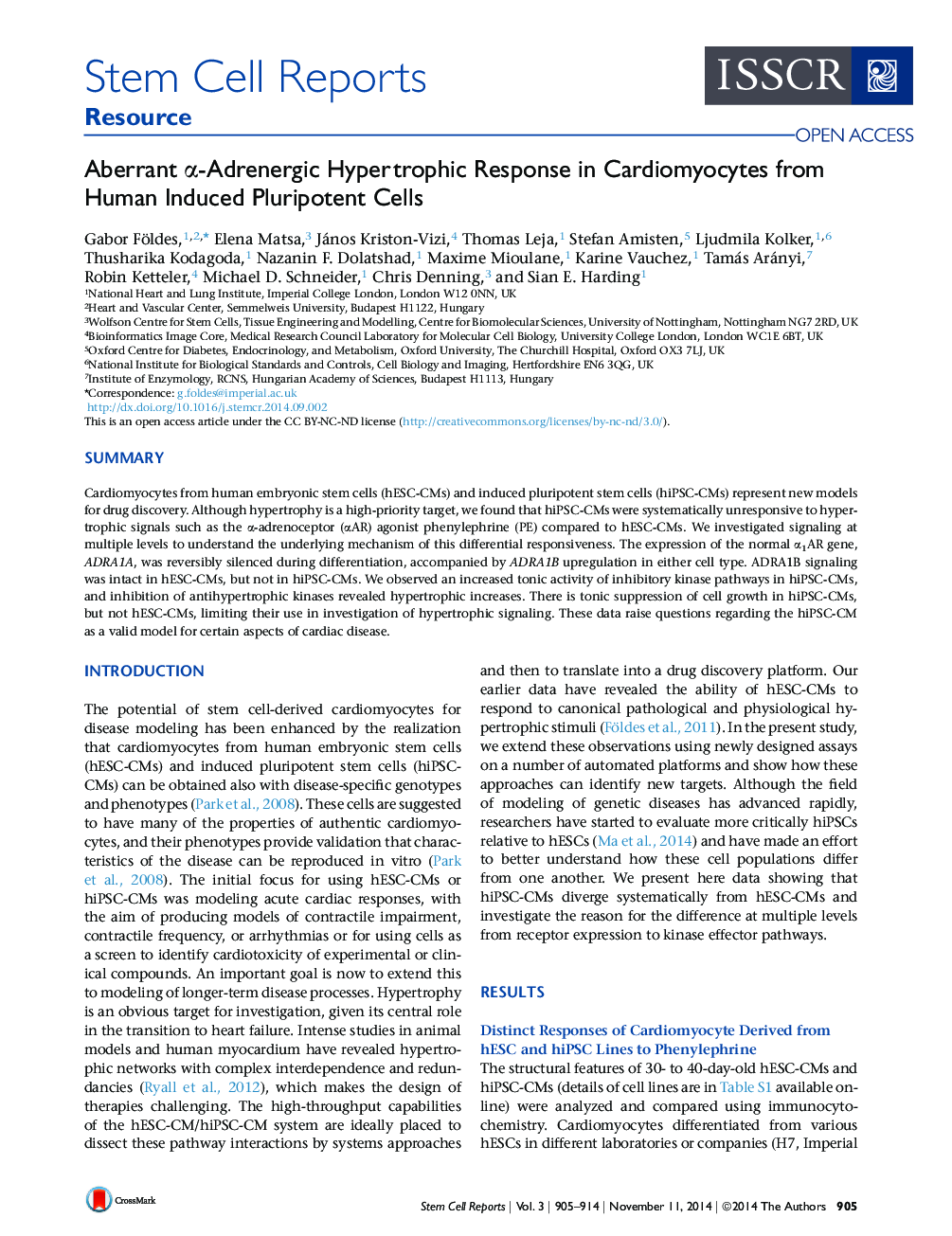| Article ID | Journal | Published Year | Pages | File Type |
|---|---|---|---|---|
| 2093336 | Stem Cell Reports | 2014 | 10 Pages |
•Human iPSC-CMs are unresponsive to α-adrenergic hypertrophic signals•Silenced ADRA1A is accompanied by ADRA1B upregulation during differentiation•ADRA1B signal supports hypertrophy in hESC-CMs but is inhibited in hiPSC-CMs•Similar phenotype of hESC-CMs and hiPSC-CMs may mask differences in signaling
SummaryCardiomyocytes from human embryonic stem cells (hESC-CMs) and induced pluripotent stem cells (hiPSC-CMs) represent new models for drug discovery. Although hypertrophy is a high-priority target, we found that hiPSC-CMs were systematically unresponsive to hypertrophic signals such as the α-adrenoceptor (αAR) agonist phenylephrine (PE) compared to hESC-CMs. We investigated signaling at multiple levels to understand the underlying mechanism of this differential responsiveness. The expression of the normal α1AR gene, ADRA1A, was reversibly silenced during differentiation, accompanied by ADRA1B upregulation in either cell type. ADRA1B signaling was intact in hESC-CMs, but not in hiPSC-CMs. We observed an increased tonic activity of inhibitory kinase pathways in hiPSC-CMs, and inhibition of antihypertrophic kinases revealed hypertrophic increases. There is tonic suppression of cell growth in hiPSC-CMs, but not hESC-CMs, limiting their use in investigation of hypertrophic signaling. These data raise questions regarding the hiPSC-CM as a valid model for certain aspects of cardiac disease.
